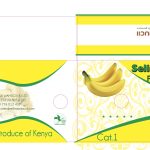 Bananas are some of East Africa’s staple foods. They also attract a high value addition premise in the supply chain such as in the making of ready-to-fry chips and banana flour. Major varieties in Kenya include Kiganda (matoke) for cooking, Apple banana, Giant Cavendish, red banana cultivars, Uganda Green and the tall variety of Lacatan.
Bananas are some of East Africa’s staple foods. They also attract a high value addition premise in the supply chain such as in the making of ready-to-fry chips and banana flour. Major varieties in Kenya include Kiganda (matoke) for cooking, Apple banana, Giant Cavendish, red banana cultivars, Uganda Green and the tall variety of Lacatan.
After maturing in eight to twelve months after planting, bananas from Kenya undergo harvesting and the follow-up post-harvesting processing. Below is a look at what an importer can learn from the local packaging process.
The Pack House Process
The post-harvesting procedure of bananas entails a tasking method of cleaning and packing per international standards. After transporting the bunches to the warehouse, workers remove fingers that have stains in them. These can include latex or waxy spots that may turn black during the shipment. The workers also remove any leftover flowers that are attached to the stalks of the fruit.
The next step involves the cleaning of the hands, using soft water. It is necessary to wipe off any evidence of latex from the fruits because they may turn different colors upon ripening. Owing to the long-term expertise at cleaning that Kenya suppliers currently exercise to reduce rejections, importers can expect uniform cleaning results for all their banana shipments.
Packaging
If you are intending to import now, you will avail the fruits in fiberboard cartons that have soft linings inside. The hands are also available in secure fiberboard boxes for local resale. The fingers usually undergo pre-cooling to below 13 degrees celsius. Many suppliers follow the standards of packing by including at least a single bunch in every one to one-and-a-half cartons.
Most cartons weigh around 13 kilos but you can expect suppliers to add by at least 500 grams for each carton to compensate for any weight decrement during shipment. The packing routine is that of keeping hands consisting of several bananas together. The other method is that of clusters which is essentially several hands with each having 20 bananas per bunch, kept in the same box. The third is packing fingers or single bananas in the same carton, one by one.
To ensure that the banana reaches your destination in a good unripened condition, the placement of the hands and fingers by size, matters. Tiny-fingered hands occupy a central position while the bigger ones prop them from the sides, without crushing.
Grading
If you are looking for bananas depending on their sizes, then grading can help you in the selection. The first grade, normally the ‘Extra Large,’ consists of the longest fingers being 200 millimeters from the stalk point to the fruit’s tip. The ‘Large’ grade is lesser than the longest sizes by at least 20 millimeters. The ‘Medium’ grade for Kenya banana ranges from 140 to 177 millimeters in length and it is the most abundant.
Final Thoughts
Most imports of bananas from East Africa take place by sea. To ensure that the fruits do not ripen unduly during transit, suppliers follow stringent measures especially during surface transport. Some of the rules include keeping the bananas around 12 to 13 degrees celsius and transporting them while they are still green. They also require medium humid conditions of around 85 percent to 90 percent so that they arrive at the end destination while still in a good condition.

